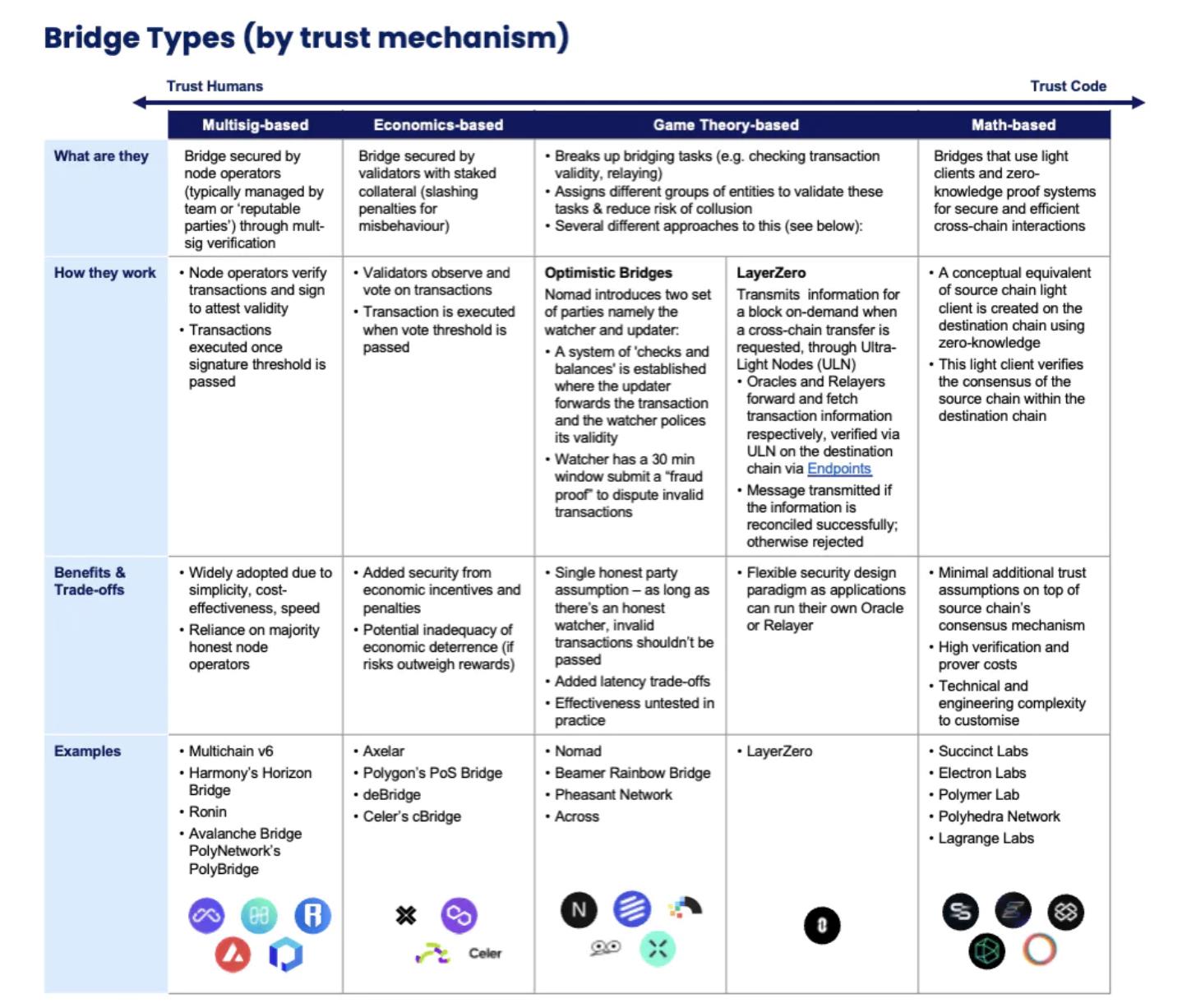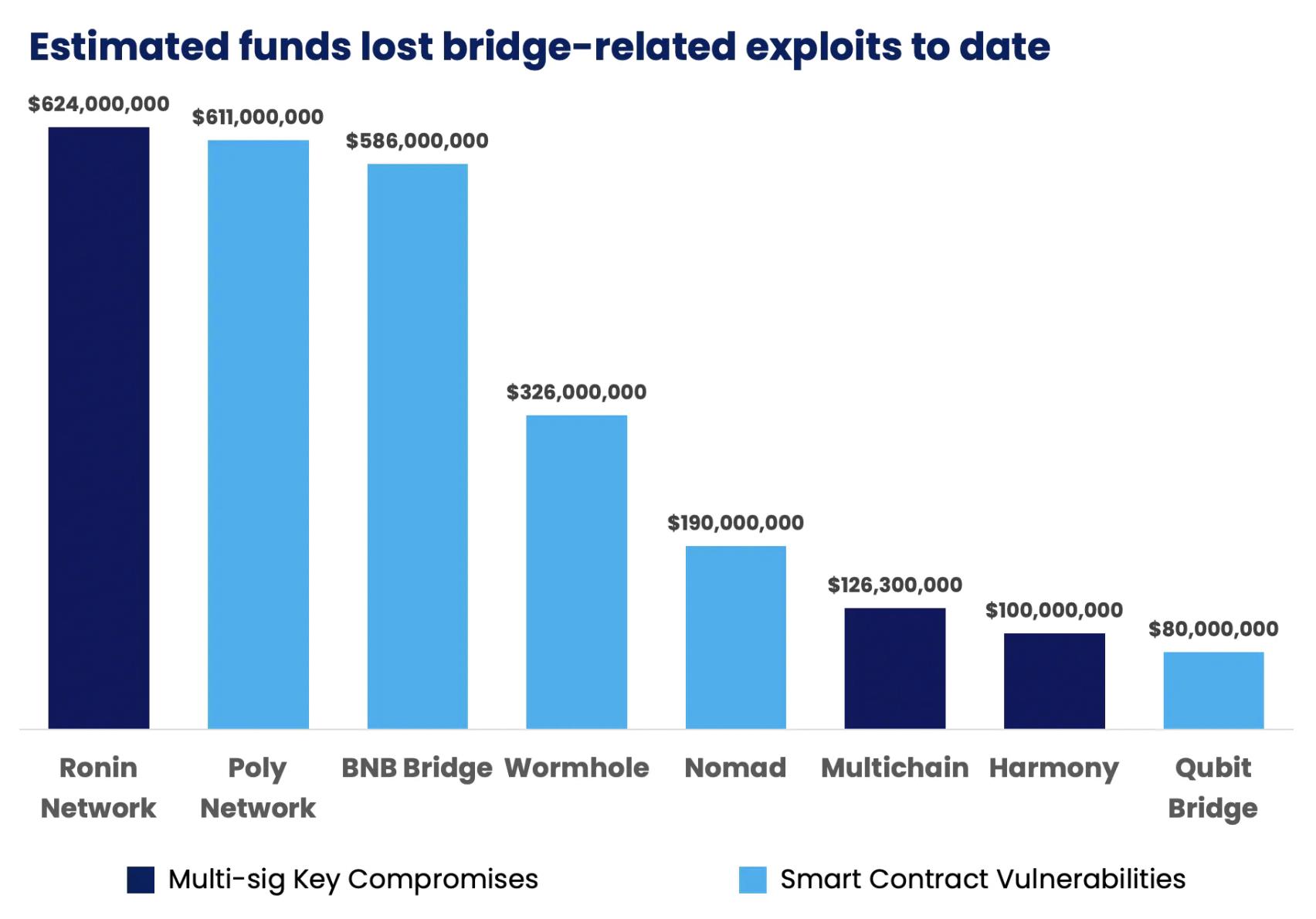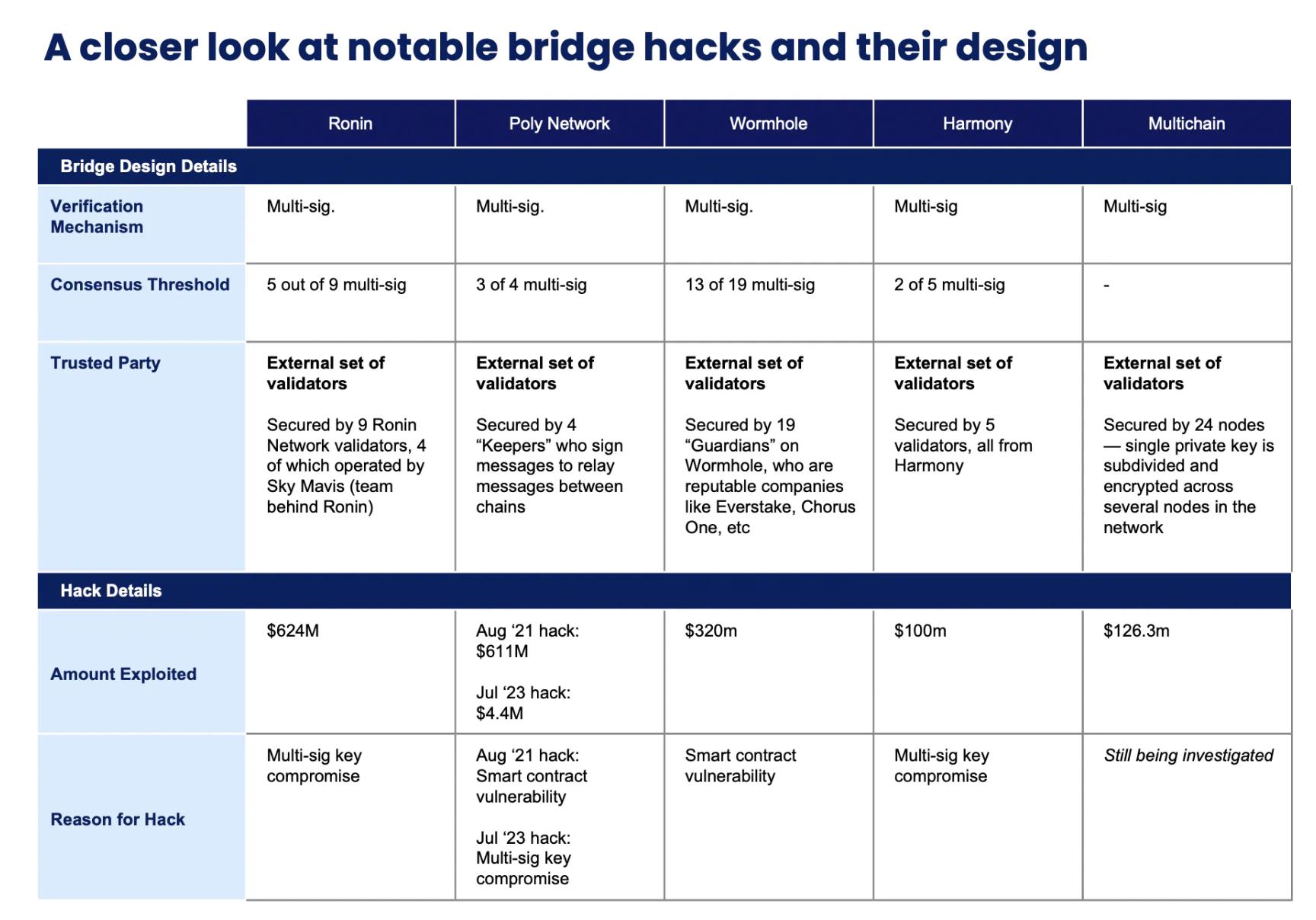Temasek Web3 Fund Superscrypt: A Detailed Analysis of the Current State of Blockchain Interoperability, Similarities and Differences in Solutions, and Trends
Original Title: Blockchain Interoperability \& the Current State of Bridging
Original Author: Jacob, Superscrypt
Compiled by: Deep Tide TechFlow
As the number of Layer 1, Layer 2, and application chains increases, secure, low-cost, and efficient communication methods between blockchains have become more important than ever.
In this article, we will introduce the importance of interoperability, the challenges faced, and the current approaches, which is the first part of a series on interoperability.
The Proliferation of Blockchains
The first public blockchain, Bitcoin, was launched in 2009. Over the past 14 years, public blockchains have experienced explosive growth, with the current number reaching 201 according to DeFiLlama. Although Ethereum dominates on-chain activity, accounting for about 96% of the total locked value (TVL) in 2021, this proportion has decreased to 59% over the past two years with the introduction of alternative Layer 1 blockchains like Binance Smart Chain (BSC) and Solana, as well as Layer 2 scaling solutions such as Optimism, Arbitrum, zkSync Era, Starknet, and Polygon zkEVM.
According to DeFiLlama, there are currently over 115 EVM-based chains and 12 Ethereum Rollups/L2s, and for various reasons, the trend of multi-chain activity will continue:
Major Layer 2 solutions like Polygon, Optimism, and Arbitrum initially positioned themselves as scaling solutions for Ethereum, raising significant funds and establishing themselves as low-cost application deployment locations (over the past year, the number of development teams on Arbitrum grew by 2779%, Optimism by 1499%, and Polygon by 116%—despite a smaller base, there are still about 200-400 developers);
The continuous launch of alt L1s optimized for specific needs. Some chains optimize for throughput, speed, and settlement time (like Solana and BSC), while others target specific use cases such as gaming (ImmutableX), DeFi (Sei), and traditional finance (like Avalanche subnets);
Applications with sufficient scale and users are launching their own Rollups or application chains to capture more value and manage network fees (dydx);
Several frameworks, software development kits, and "Rollup as a Service" providers have emerged, allowing any project to easily create its own Rollup, reducing technical difficulty (such as Caldera, Eclipse, Dymension, Sovereign, Stackr, AltLayer, Rollkit).
We live in a multi-chain, multi-layer world.
The Growing Importance of Interoperability
The proliferation of Layer 1, Layer 2, and application chains highlights the importance of interoperability, which is the ability and method for transferring assets, liquidity, messages, and data between blockchains.
As suggested by Connext, blockchain interoperability can be divided into three parts:
Transfer: The process of passing message data from one chain to another;
Verification: Proving the correctness of the data (often involving proof of the consensus/state of the source chain);
Execution: The process by which the target chain processes the data.

The benefits of being able to transfer assets and liquidity between chains are evident—it allows users to explore and transact in new blockchains and ecosystems. They will be able to leverage the advantages of new blockchains (such as trading or transacting on a Layer 2 with lower fees) and discover new profitable opportunities (such as accessing higher-yielding DeFi protocols on other chains).
The benefits of transferring messages lie in unlocking a whole set of cross-chain use cases without moving their original assets. Messages sent from Chain A (source) can trigger code execution on Chain B (target chain). For example, a dapp on Chain A can pass messages about user assets or transaction history to Chain B, allowing them to participate in activities on Chain B without moving any assets, such as:
Borrowing on Chain B while using assets on Chain A as collateral;
Participating in community benefits on a low-cost Rollup (such as minting new NFT collections, claiming event tickets, and merchandise) without moving their NFTs from Chain A;
Utilizing their decentralized identity and on-chain history established on one chain to participate in DeFi on another chain and obtain better rates.
Challenges Facing Interoperability
Despite the many benefits of interoperability, it faces numerous technical challenges:
First, blockchains often do not communicate well with each other: they use different consensus mechanisms, cryptographic schemes, and architectures. If your tokens are on Chain A, using them to purchase tokens on Chain B is not a straightforward process.
Second, at the verification level, the reliability of interoperability protocols depends on the chosen verification mechanism to validate whether the messages being passed are indeed legitimate and valid.
Third, development in multiple places leads to a loss of composability for applications, which is a key building block of Web3. This means developers cannot easily compose components on another chain to design new applications and unlock greater possibilities for users.
Finally, the large number of chains means that liquidity is fragmented, reducing the capital efficiency for participants. For example, if you provide liquidity on Chain A to earn yields, it becomes difficult to use the LP tokens from that transaction as collateral in another protocol to generate more yields. Liquidity is the lifeblood of DeFi and protocol activity; the more chains there are, the harder it is for them to thrive.
There are currently some interoperability solutions addressing these issues, so what is the current state?
The Current State of Interoperability
Today, cross-chain bridges are the main facilitators of cross-chain transactions. There are currently over 110 cross-chain bridges, each with different functionalities and trade-offs in terms of security, speed, and the number of supported blockchains.
As outlined by LI.FI in their article, there are several different types of cross-chain bridges:
Wrapped and Minted Cross-Chain Bridges—tokens are secured on Chain A via multi-signature and corresponding tokens are minted on Chain B. In theory, wrapped tokens should have the same value as the original tokens, but their value depends on the security of the cross-chain bridge—if the bridge is hacked, the wrapped tokens will not be exchangeable back to the original tokens when users try to bridge from Chain B to Chain A (Portal, Multichain).
Liquidity Networks—parties provide token liquidity on both sides of the chain to facilitate cross-chain swaps (e.g., Hop, Connext Amarok, Across).
Arbitrary Message Cross-Chain Bridges—can transmit any data (tokens, contract calls, chain states), such as LayerZero, Axelar, Wormhole.
Specific use case cross-chain bridges (e.g., stablecoin and NFT bridges) destroy stablecoins/NFTs on Chain A and release them on Chain B.
These cross-chain bridges employ different trust mechanisms, supported by various trusted parties and incentives, and these choices are significant:
Team Human relies on a group of entities to prove the validity of transactions;
Team Economics relies on a group of collateralized validators whose staked assets face the risk of being slashed to deter bad behavior. This mechanism only works when the economic incentive for bad behavior is less than the slashing penalty.
Team Game Theory assigns various tasks in the cross-chain process (such as validating transaction validity; relaying) to different participants.
Team Math verifies the state of one chain through on-chain light clients before releasing assets to another chain, utilizing zero-knowledge technology and succinct proofs. This approach minimizes human intervention and is technically complex.
Ultimately, the range of trust mechanisms spans from human-based to economically incentivized humans to mathematically-based verification. These approaches are not mutually exclusive—in some cases, we see combinations of methods to enhance security—for example, LayerZero's game-theory-based cross-chain bridge uses Polyhedra (which relies on zk proofs for validation) as its oracle network.

So far, how have cross-chain bridges performed? To date, cross-chain bridges have facilitated a massive transfer of capital—reaching a peak total locked value (TVL) of $60 billion in January 2022. Due to the involvement of such large capital, cross-chain bridges have become prime targets for attacks and hacks. In 2022 alone, $2.5 billion in funds were lost, including a combination of multi-signature key leaks and smart contract vulnerabilities. A 4% annual capital loss rate is unsustainable for a financial system; it cannot thrive and attract more users.

Attacks continued in 2023, with multi-chain addresses being drained of $126 million (50% of Fantom cross-chain bridge assets and 80% of Moonriver cross-chain bridge assets), while revealing that their CEO had been controlling all "multi-signature" keys. In the weeks following this hack, the total locked value (TVL) on Fantom dropped by 67% (with a significant amount of assets bridged through multi-chain bridges on Fantom).
Ultimately, some of the largest cross-chain bridge attacks and their subsequent consequences can be attributed to multi-signature vulnerabilities (Ronin $624 million, Multichain $126 million, Harmony $100 million), highlighting the importance of the trust mechanisms employed by the cross-chain bridges.

Having a small (Harmony) or clustered (Ronin) or single (Multichain) set of validators is one of the key reasons for some of these attacks, but attacks can come from many different avenues. In April 2022, the FBI, CISA, and the U.S. Treasury released a joint cybersecurity advisory highlighting some of the tactics used by the North Korean government-backed Lazarus Group. These tactics included social engineering, phishing via email, Telegram, and centralized exchange accounts.
So, What Should We Do Next?
It is clear that human-dependent verification mechanisms are easy targets for attacks, but the demand for secure and efficient interoperability remains. So where do we go from here?
We are now seeing the emergence of trust-minimized verification methods, which excite us:
In Part Two, we will introduce consensus proofs, which are used to prove the latest consensus of the source chain (i.e., their state/"authenticity" in recent blocks) to facilitate bridging;
In Part Three, we will introduce storage proofs, which are used to prove historical transactions and data in old blocks to facilitate various cross-chain application scenarios.
Both methods are centered around minimizing trust in verification to avoid reliance on humans and their flaws, laying the groundwork for the future of interoperability.















